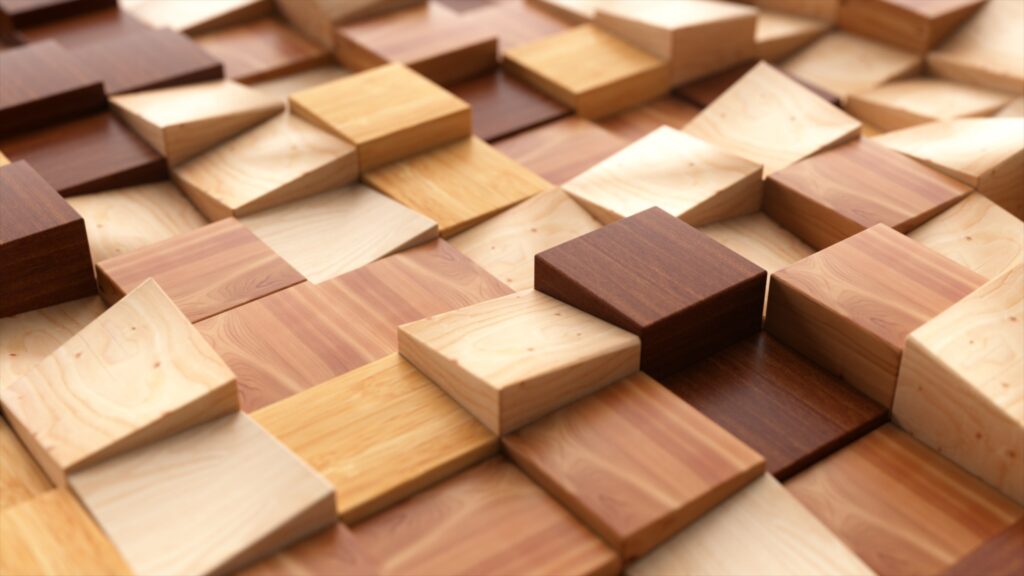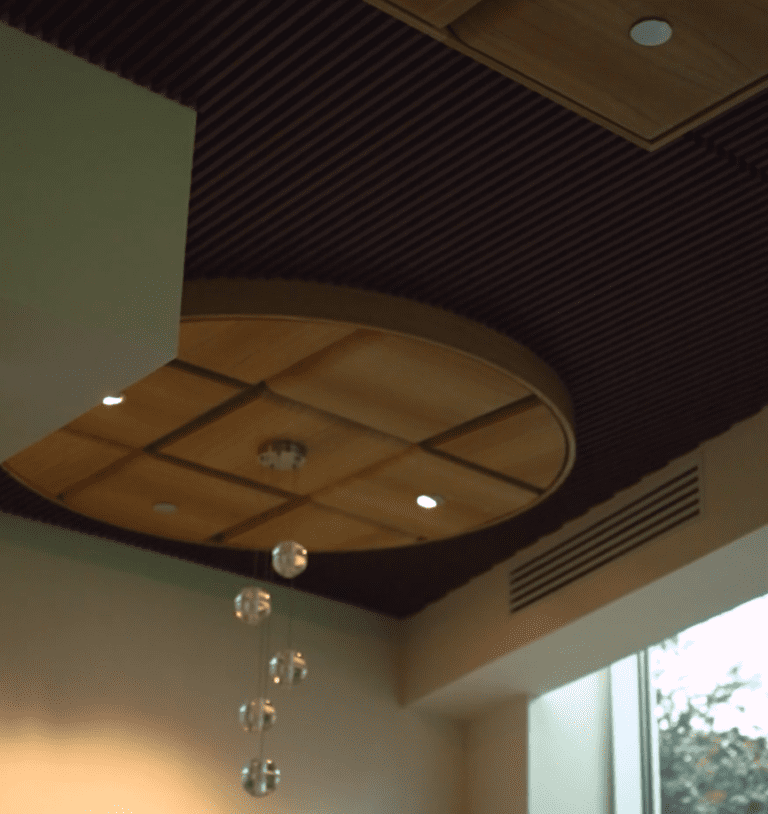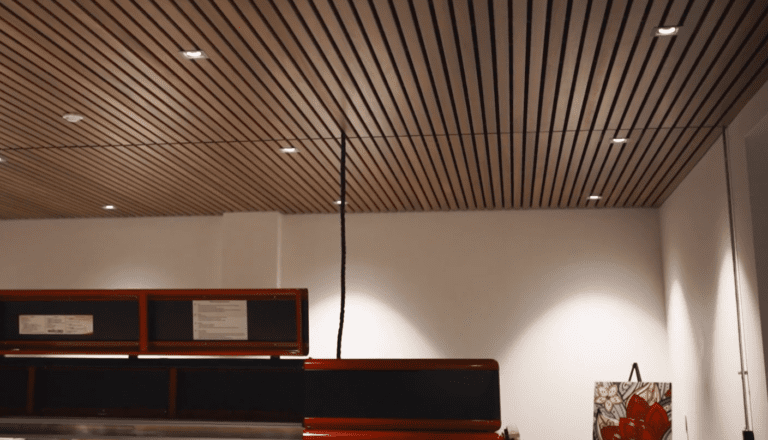One of the important decisions you’ll make while planning a wood panel system is choosing the perfect species of wood. Different types of wood present a range of colors, grain patterns, and performance characteristics.
There are a number of woods that work well for ceilings and walls. Some of the best options include:
- Ash
- Beech
- Cherry
- Maple
- Poplar
- Red oak
- White oak
At Rulon International, we practice sustainable sourcing and production methods for each of these woods. Sustainable production ensures that source forests aren’t depleted or polluted so that these beautiful materials can be enjoyed by future generations.
Below, we’ll highlight the pros and cons of these popular wood species. First, let’s step through the factors you should consider while making your wood selection.
Factors to Consider When Choosing Different Types of Wood
When selecting a wood, consider these factors:
- Durability: some woods are more dense and strong than others, resulting in superior damage resistance and longevity
- Appearance: woods come in various colors and present different grain patterns, offering a variety of choices for any color scheme or design theme
- Maintenance: some woods are more prone to moisture damage, dents, and scratches, and thus require more protection and care
- Cost: more abundant woods are generally lower-priced, while rarer or exotic woods are pricier
- Sustainability: eco-conscious consumers can select wood products that were sourced and produced responsibly
When planning a wood panel project, discuss your design vision with your contractor and seek their input on which wood will best suit your needs.
Best Wood Species for Ceilings and Walls
Ash
Ash is a straight-grained, light-colored wood that’s known for strength and elasticity. Along with building design projects, ash wood is used for furniture, small items like tool handles, and baseball bats.
A major benefit of Ash is its color consistency and stainability. Ash is naturally consistent in color and receives stain well, making it an excellent choice for most applications – especially when unique colors are involved.
Beech
Beech is a resilient hardwood that displays a fine, straight grain with large medullary rays, i.e. rays that extend perpendicularly from the tree’s rings.
Beech is a great choice for a bright, modern aesthetic. Its coloring is a lovely pale cream hue, sometimes featuring attractive shades of yellow, orange, pink, or brown. The wood species is also strong and dense yet easy to work with.
Cherry
Arguably one of the most beautiful woods, cherry offers a smooth texture and a rich, reddish-brown hue that darkens naturally over time.
Cherry wood is easy to work with, ages beautifully, and offers a gorgeous high-end aesthetic. This premium wood species ages beautifully with a lovely color and grain pattern, making it an excellent long-term aesthetic investment.
Maple
Maple is a durable hardwood with a uniform grain pattern. Maple is creamy white, often with a reddish tinge, and darkens slightly as it ages.
One of maple’s most well-known traits is its strength, followed closely by shock resistance. For those looking for an affordable option, you will find incredible value in maple as your option for a paneling system.
Poplar
Poplar is a hardwood, but it’s relatively soft and easy to work with. This species is associated with high-end furniture and smaller woodwork, but it’s also used for structural applications. Poplar’s hue is pale yellow or off-white, sometimes with greenish or purplish streaks.
For the budget-conscious, you will like that poplar is one of the most affordable high-quality hardwoods. However, it is not one of the most robust and durable of the hardwoods. Poplar is best used in decorative applications away from areas that experience frequent foot traffic and human activity, such as ceiling systems or high wall panels.
Red Oak
Red oak is a light brown hardwood, sometimes featuring a pink or salmon hue. This wood has a classic look that suits traditional decor themes.
This species produces attractive wood with a distinctive wide grain pattern. Red oak also stains well and comes in a wide variety of hues, making it a highly-customizable option.
White Oak
White oak actually tends to be darker than red oak, coming in various shades of light and dark brown. White oak is also slightly more dense and strong than red oak.
A suitable selection for active, high-humidity environments, white oak wood is durable and moisture-resistant. Its strength and density make it a robust and long-lasting wood that retains plenty of style and visual appeal over time.
The Role of Sustainability in Wood Selection
Along with picking a wood that fits your budget and meets your design goals, you may choose to prioritize sustainability. Doing so helps ensure that wood remains an available, affordable building material for generations to come.
At Rulon International, sustainability is a core value. We prioritize recycled materials, sustainably harvested wood, and indoor air quality. Our products are Indoor Advantage Gold Certified and contribute to LEED, Living Building Challenge, and the WELL Building Standard.
Get Sustainable Wood Panel Systems for Your Commercial Space
Rulon International is the leading manufacturer of state-of-the-art wood panel systems. Contact our team today to discuss your next ceiling or wall project.




